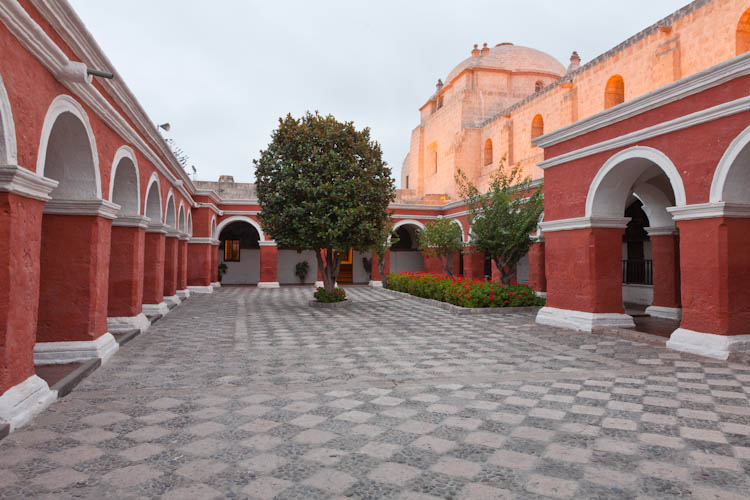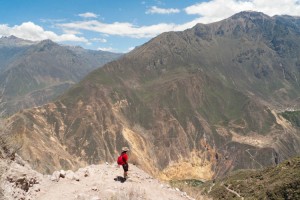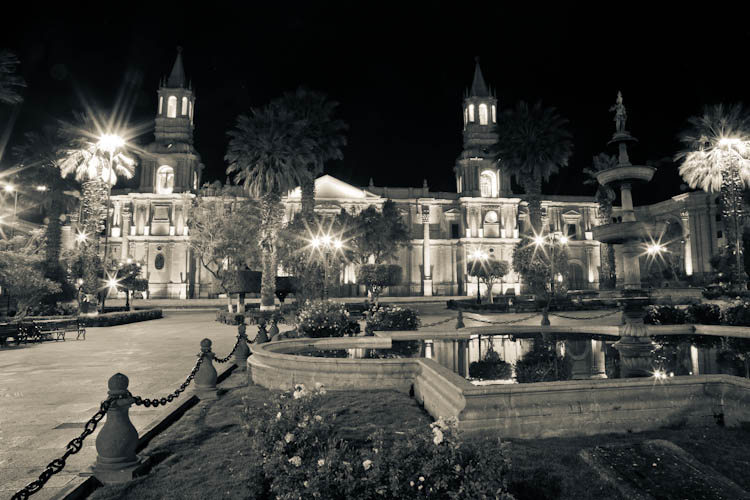The Monasterio de Santa Catalina is a cloistered convent in Arequipa, originally built in the 16th century. The founder of the monastery was a rich widow; The tradition of the time indicated that the second son or daughter of a family would enter religious service, and the convent accepted only women from high-class Spanish families. Each nun at Santa Catalina had between one and four servants or slaves, and the nuns invited musicians to perform in the convent, gave parties and generally lived a lavish lifestyle. Each family paid a dowry at their daughter’s entrance to the convent, and the dowry paid to gain the highest status was 2,400 silver coins (equivalent to around $50,000 today).
Category > Arequipa
Cañon del Colca
Colca cayon, about 150km north from Arequipa, is a large canyon which at 4,160 m deep is more than twice as deep as the Grand Canyon in the United States. Until a few years ago, this was believed to be the deepest canyon in the world: Now that title goes to the Cañon de Cotahuasi, just 100km to the west, which is deeper by some 150m or so. Still, Cañon del Colca was incredibly impressive in it’s own right; From tiny traditional villages, soaring condors overhead, and huge snow-capped mountains looming in the distance, to the backpacker-mecca of ‘The Oasis’ with its palm-shaded swimming pools in the bottom of the canyon- This was a great mix of rugged nature, culture, and relaxation.
Arequipa
Von dem idyllischen See Titikaka kommend, waren wir auf Arequipa als Perus zweitgrößte Stadt nicht vorbereitet und die Stadt traf und wie ein Schlag ins Gesicht. Die grauen Smog Wolken, die tagsüber so dicht sind, dass man es schwer hat die Umrisse des nahe gelegenen Vulkans El Misti zu erkennen, kündigten sich schon von weiten an: Aus den Bergen mit dem Bus kommend wehte durch die geöffneten Fenster Abgase herein, die einen die Luft nahm und stark an Lima erinnern ließ. Als wir dann am Abend etwas zu essen suchten, wurden wir von der Masse der Menschen überrollt. Wir sollten feststellen, dass man erst einmal wieder lernen muss, wie man sich auf vollen Straßenzügen bewegen muss, um nicht jede paar Sekunden mit einem Passanten zusammenzustoßen.



 | Powered by
| Powered by